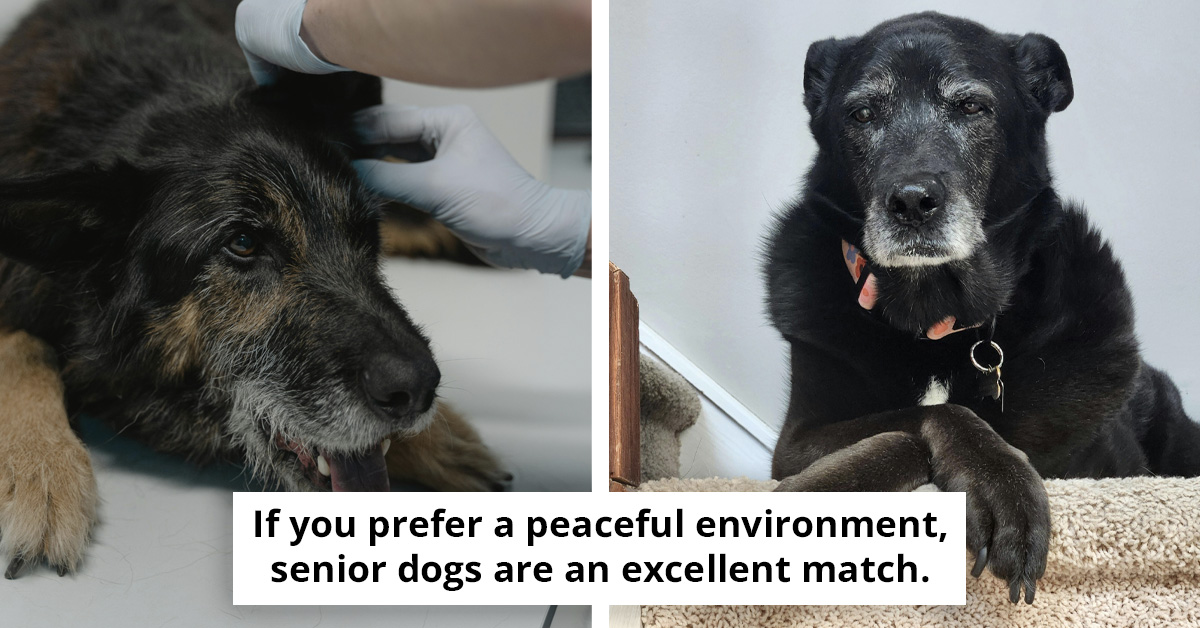Different Dog Breeds That People Often Confuse And How To Tell Them Apart
There are currently 195 officially recognized dog breeds. Every dog breed has its qualities and flaws. However, some breeds can look remarkably similar.
Similar body types, coat colors, and personalities can lead to confusion. This similarity is a result of dogs being crossbred over millennia, often with specific purposes in mind. All dogs are direct descendants of wolves, and some older breeds maintain dominant traits.
When people attempt to achieve similar qualities in dogs, their appearances can turn out to be strikingly alike, if not identical.
We have compiled a list of the most commonly confused dog breeds along with tips on how to distinguish them. We hope you find it to be a useful guide about dog breeds. You may learn something new and also have interesting trivia for your next social event. Take a look.
Chihuahua & Russian Toy Terrier
Chihuahuas and Russian Toys look similar but have many differences. Chihuahuas are from Mexico, while the Russian Toy dog is from—take a guess.
They have similar sizes and weights, but a Chihuahua’s head is rounder, while the Russian Toy dog has a longer muzzle and a slimmer body.
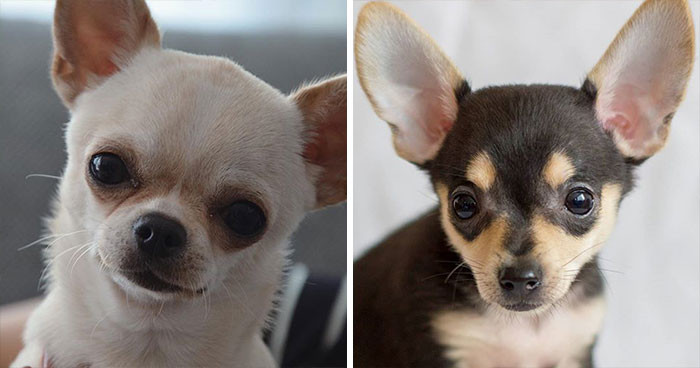
Lhasa Apso & Shih Tzu
Both dog breeds come from Asia and share a bloodline. It’s no surprise they often get confused—Shih Tzus originate from Lhasa Apsos.
The Lhasa Apso is a bit larger, with a height of 10-11 inches and a weight of 12 to 18 pounds. The Shih Tzu is usually 9-10.5 inches tall and can weigh between 9 and 16 pounds.

Cane Corso & Boxer
Typically, Cane Corsos can be distinguished from Boxers by their ears, as they are usually clipped. However, the main distinction is that Cane Corsos are generally larger than Boxers.
They can weigh between 88 and 111 pounds, while Boxers can reach weights of up to 71 pounds.
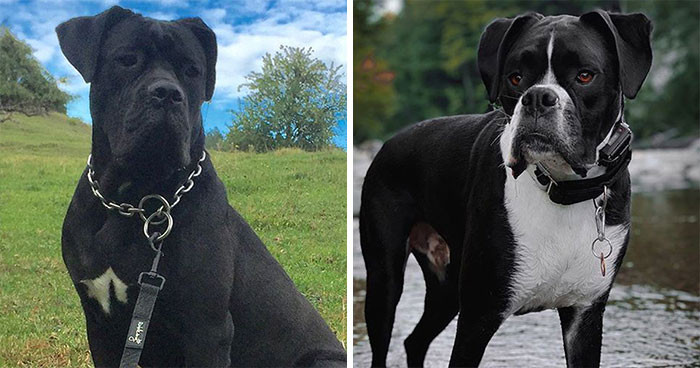
Saint Bernard & Moscow Watchdog
The St. Bernard originates from Switzerland, while the Moscow Watchdog was bred in Russia, but they share common ancestors. The Moscow Watchdog is derived from crossbreeds between the Caucasian Shepherd Dog and the St. Bernard.
They have similar heights, but St. Bernards outweigh Moscow Watchdogs by more than 20 kg (44 pounds). St. Bernards generally require more maintenance, as they are used for search and rescue, while their Russian counterparts are not.
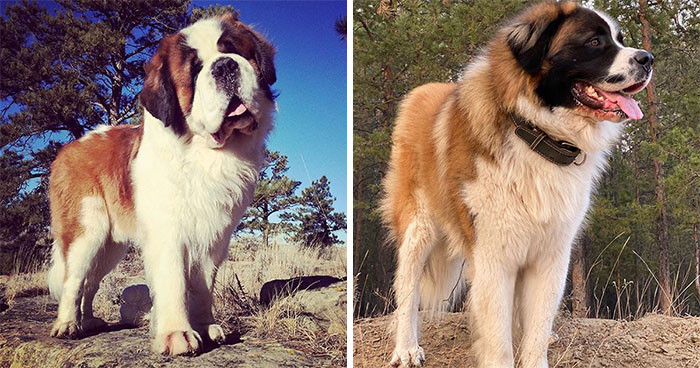
Vizsla & Rhodesian Ridgeback
Both breeds are muscular and have beautiful red-colored coats. The key difference that distinguishes the Rhodesian Ridgeback from the Vizsla is the ridge of hair running in the opposite direction along the back.
They are both hunting dogs, but the Rhodesian Ridgeback (nicknamed the lion dog) comes from Africa, while the Vizsla originates from Hungary.

Akita Inu & Shiba Inu
The difference is obvious when they are standing next to each other—it’s their size. The Akita is much larger than the Shiba Inu.
Akitas usually weigh between 70 and 130 pounds, while the Shiba Inu typically weighs only up to 23 pounds. Additionally, Akitas can drool a lot, whereas Shiba Inus do not.
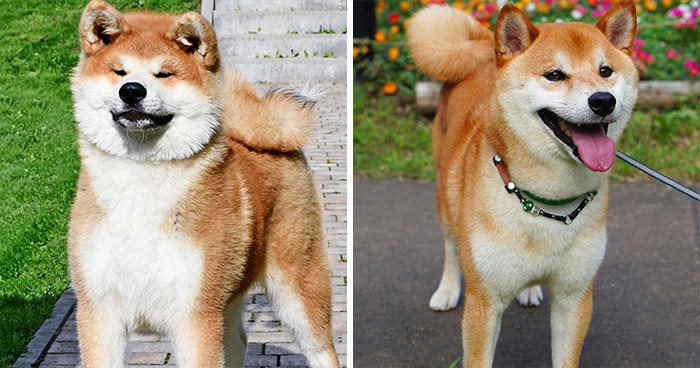
Alaskan Malamute & Husky
The Siberian Husky's height varies from 20 to 23.5 inches, while the Alaskan Malamute stands at 23 to 25 inches tall. They are also heavier than Huskies, weighing 75-100 pounds compared to 60 to 70 pounds for Huskies.
Malamutes cannot have blue eyes. Their heads are more massive and rounder, and their tails are usually pointed upward, while Huskies keep their tails down.
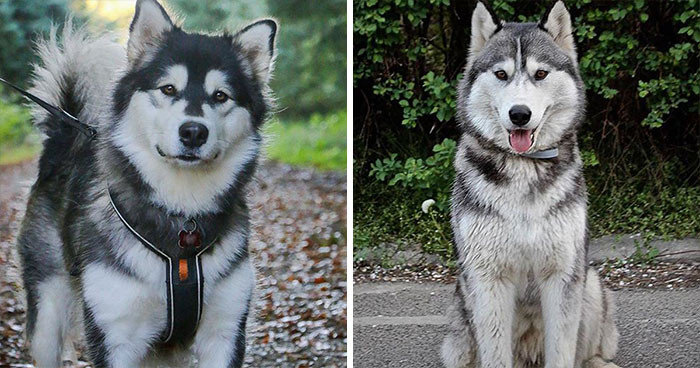
Bernese Mountain Dog & Greater Swiss Mountain Dog
They have a lot in common—such as a tri-color coat and equally trustworthy natures. However, the Greater Swiss Mountain Dog is heavier (males can reach 140 pounds) and more muscular. The Bernese Mountain Dog is fluffier and typically weighs up to 115 pounds.
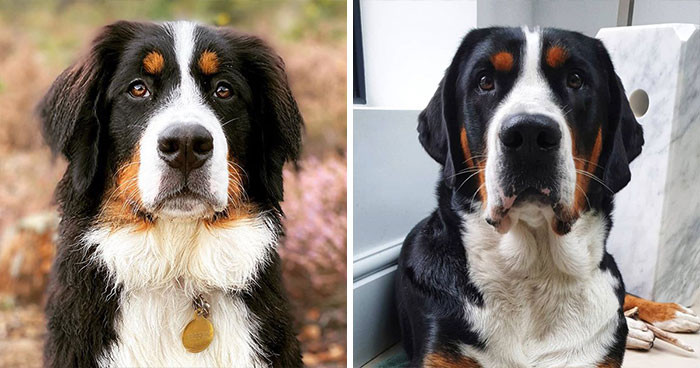
Collie & Scottish Shepherd Sheltie
Shelties and Collies differ in size—Collies are much larger than Shelties. Collies also have longer muzzles. Unfortunately, both breeds can suffer from genetic issues, including seizures and eye problems.
They are both great with children and are generally very friendly, but Collies tend to be quieter and shyer than Shelties.
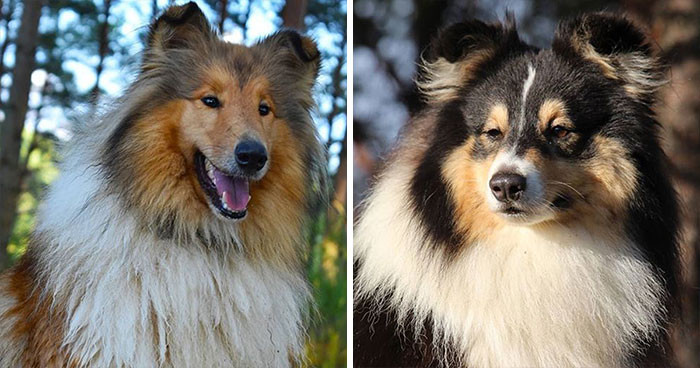
Golden Retriever & Labrador Retriever
Both breeds have similar temperaments. They are friendly, joyful, and great with kids. Golden Retrievers are a bit more sensitive.
In terms of appearance, Golden Retrievers have longer fur and fluffy tails, while Labradors are more athletic, with short hair and rounder heads.

Beagle & American Foxhound
Both breeds are sweet-tempered and easy-going, making them great family pets. The main difference is their size.
Beagles are shorter and lighter, standing at 15 inches tall and weighing up to 35 pounds, while the American Foxhound is typically 25 inches tall and weighs about 65 pounds.

Puli & Komondor
Both the Puli and Komondor stand out with their unique, high-maintenance fur. The Puli is usually much lighter and smaller, with a height of 17 inches and a weight of 35 pounds, while the Komondor is typically about 27 inches tall and can reach a weight of 100 pounds or more.

Whippet & Italian Greyhound
They both resemble small greyhounds with their slim bodies and pointy heads, and they likely share a common ancestor. The Italian Greyhound can be traced back to the Middle Ages, but it is unknown whether these dogs were used for hunting or kept as pets.
The Whippet, however, was bred solely for hunting in open fields. These dogs were referred to as "the poor man's greyhound" in England. While remarkably similar, the two breeds differ in size. The Whippet typically stands 18 to 22 inches tall, while the Italian Greyhound reaches a height of 13 to 15 inches.

French Bulldog & Boston Terrier
Compared to Boston Terriers, French Bulldogs generally have a more massive bone structure and are usually more muscular, while Boston Terriers have tuxedo-style color patterns and longer legs.
French Bulldogs also have square-shaped heads and vertical, bat-like ears, while the Boston Terrier has a round head and pointed ears.

Belgian Malinois & German Shepherd Dog
Belgian Malinois and German Shepherd Dogs are similar in size. They have comparable fur colors and are both excellent service dogs.
However, the Belgian Malinois was crossbred for herding and has only recently been introduced as a service dog, while the German Shepherd was bred to be a utility dog from the beginning. The Malinois are slimmer, smaller, and have shorter hair than German Shepherds.




